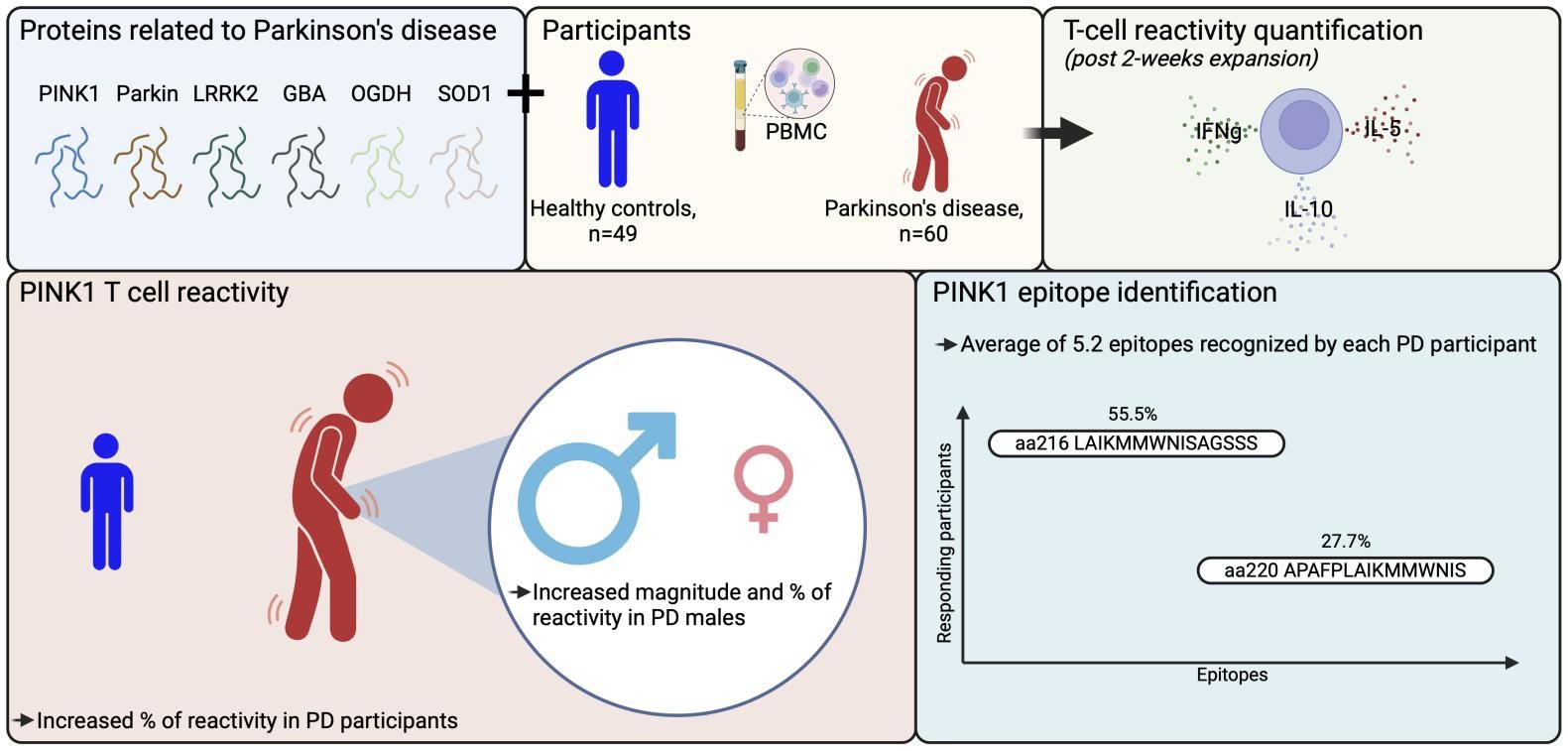A recent study reveals an immune mechanism that could explain why Parkinson’s disease affects more men than women. This discovery opens up prospects for new therapeutic and diagnostic strategies.

Parkinson’s disease, a neurodegenerative disorder, affects more men than women. Researchers at the La Jolla Institute for Immunology (LJI) have identified an autoimmune response involving the PINK1 protein that could explain this disparity. Their work, published in The Journal of Clinical Investigation, suggests that immune cells attack neurons expressing this protein, causing inflammation and degeneration.
The unexpected role of the PINK1 protein
PINK1 is a protein essential for the proper functioning of mitochondria, the energy powerhouses of cells. Normally, it helps regulate the energy balance of neurons, ensuring their survival and optimal functioning. However, in some patients with Parkinson’s disease, this protein becomes the target of an inappropriate immune response, triggering a cascade of harmful reactions.
The researchers discovered that T cells, immune cells responsible for protecting the body, mistakenly identify PINK1 as a threat. These cells then attack neurons expressing this protein, causing inflammation and progressive degeneration of brain cells. This autoimmune mechanism could play a central role in the development and progression of Parkinson’s disease.

A striking observation concerns the difference between the sexes. Men with Parkinson’s have a 6-fold increase in PINK1-specific T cells compared to healthy men. Women, on the other hand, show only a 0.7-fold increase in these T cells. This divergence could partly explain why men are twice as likely to develop the disease, highlighting the importance of immune factors in this pathology.
Implications for diagnosis and treatment
The discovery of this immune response targeting the PINK1 protein opens new perspectives for the early diagnosis of Parkinson’s disease. By detecting the presence of PINK1-specific T cells in the blood, doctors could identify at-risk patients before the onset of clinical symptoms. This approach would allow for earlier therapeutic intervention, potentially more effective in slowing disease progression.
On the therapeutic front, this work offers promising avenues for the development of new treatments. Blocking the action of T cells that attack neurons expressing PINK1 could reduce inflammation and preserve brain cells. Further studies are needed to explore this strategy and evaluate its effectiveness in clinical trials, but it represents a concrete hope for patients.
Finally, this research underscores the importance of a personalized approach in the treatment of Parkinson’s disease. Understanding the immune differences between men and women, as well as individual variations in autoimmune responses, could allow for better adaptation of therapies. These advances could transform the management of this neurodegenerative disease, offering new options to improve patients’ quality of life.


